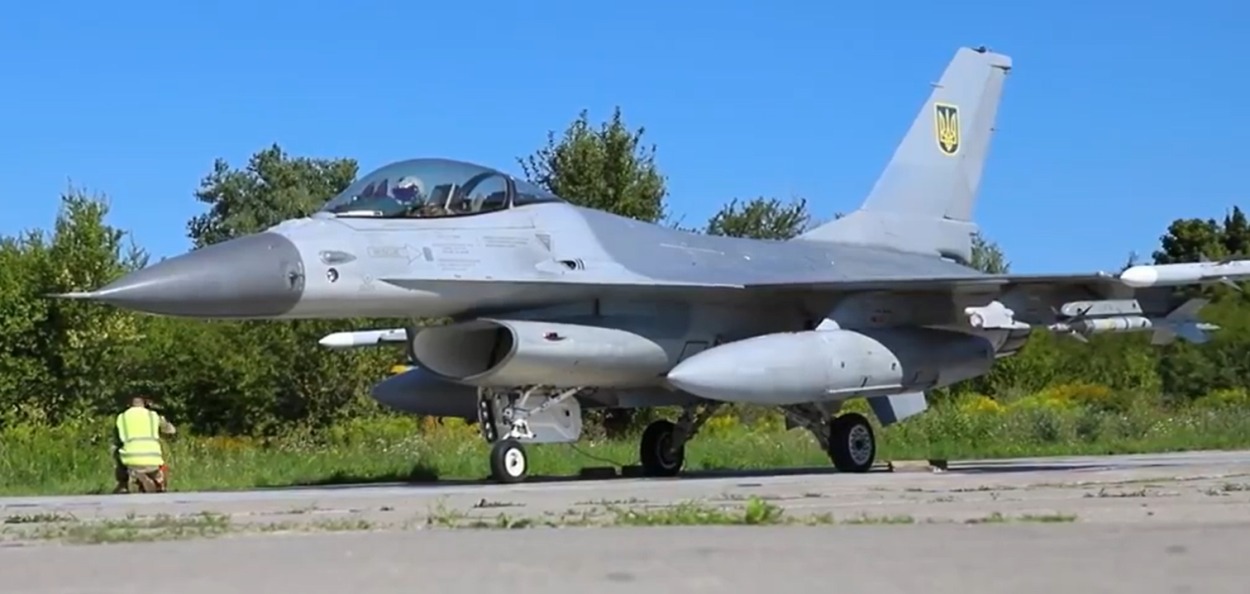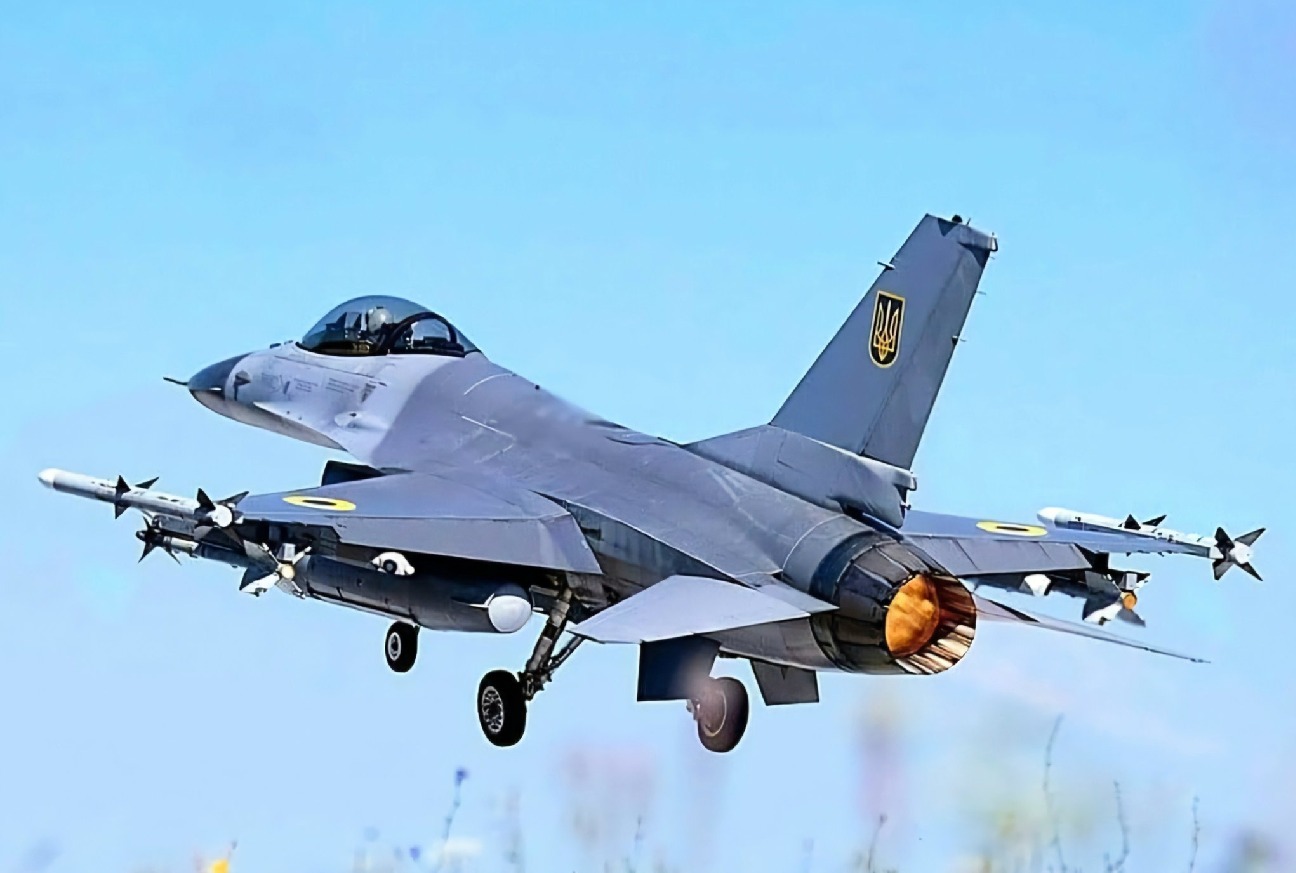The top US Air Force officer in Europe has disclosed that the Ukrainian Air Force is not employing F-16 Fighting Falcons for complex operations after its first crash.
Speaking at AFA’s Air, Space & Cyber conference on September 17, Gen. James B. Hecker, the head of U.S. Air Forces in Europe and NATO Allied Air Command, said Ukraine was proceeding with caution with the deployment of its newly-received F-16 Fighting Falcons.
“The pilots are new to it, so they’re not going to put them at the riskiest missions,” Hecker said, adding that, “Ultimately, that’s a Ukrainian decision. But I think that’s the approach that they’re taking.”
Hecker asserted that before transitioning to the F-16, Ukrainian pilots had only flown MiG-29s and Su-24s and were not very experienced with Western tactics. He emphasized that the Ukrainian pilots were still learning how to handle the F-16 and that it was unlikely that they would be tasked with conducting risky or complex missions any time soon.
The F-16 fighter that Ukraine initially started flying in August has already proven to be effective in taking out Russian drones and cruise missiles. However, a Ukrainian F-16 crashed under a barrage of missiles and drone strikes late last month, killing the pilot. An investigation was initiated into the crash and the Commander of the Ukrainian Air Force Commander was dismissed.
Speaking about the incident, Hecker noted that the United States has volunteered to assist with the investigation into the crash but refrained from speculating on what may have caused it.
Hecker stated that over 100 Russian aircraft have been shot down by Ukraine, and at least 75 Ukrainian aircraft have been shot down by Russia so far in the conflict. He said both sides have so far refrained from fully employing all their aircraft for fear of losing them.

Nonetheless, some experts see the remarks about Ukraine’s hesitation to employ the F-16 for complex missions as a way to hide the vulnerability of the aging fighters against a more advanced and lethal Russian air force fleet.
In response to Hecker’s comments, Indian Air Force veteran and avid follower of the Russian military Squadron Leader Vijiander K. Thakur commented, “When your 70s vintage, single-engine, short-range fighter has little role to play operating against high endurance, far-seeing, long-range weapons-armed adversary fighters, this is how you cope.”
He further stressed, “Evolved tactics and intuitive displays should make complex tasks easy to execute for well-trained fighter pilots. Pilots are trained to exploit aircraft capabilities relying on their nerves and discipline, not their ability to solve complex problems!. Ukraine has experienced fighter pilots, and type conversion for experienced pilots is not that big a deal.”
It is noteworthy that ever since Ukraine received the first batch of F-16s, several analysts have pointed out that the aircraft was not going to be a silver bullet for Ukraine and could only be employed for air defense missions.
Accelerated Training May Have Caused The Crash?
Preliminary reports of the crash suggested that the F-16 disappeared from radar shortly after a Russian missile exploded nearby, potentially damaging the aircraft or forcing the pilot into a perilous maneuver. Some reports initially attributed the crash to pilot error, but they were soon retracted.
Nonetheless, the crash sparked the discourse about accelerated pilot training due to Ukraine’s consistent lobbying. More importantly, the training program has been focused on the specific missions intended for the F-16s, such as intercepting Russian cruise missiles.
It is noteworthy that before taking part in combat, Western F-16 pilots usually go through a rigorous training program that can last up to a year. Ukrainian pilots, on the other hand, were thrown into the fight much earlier. Moreover, their challenges were compounded by a glaring language barrier.

Air Marshal Anil Chopra (Retired) previously told EurAsian Times, “There are several aspects to training a pilot. The first is that you train a human being to become a pilot. The second stage is turning that pilot into a fighter pilot. The third stage is converting them to fly a specific type of aircraft.”
Chopra pointed out, “In Ukraine’s case, the pilots sent for F-16 training were already fighter pilots, so that stage was complete. However, for every aircraft to really become operational, you must be able to safely take off and land. This isn’t very difficult because if you’re already a fighter pilot, learning to take off involves just understanding the specific checks and procedures. A certain amount of training is required, which typically takes a few months.”
“However, it takes further training to become fully operational, meaning ready for combat. There are armaments, electronics, warfare tactics, and many other aspects involved. Therefore, just training a pilot to fly an F-16 is not enough. If you rush through the whole process of flying the F-16 and becoming operational, there are significant risks,” Chopra added.
He mentioned that it was expected from the beginning that Ukraine would lose its F-16s in the early stages, either in the air or on the ground.
Meanwhile, Hecker said that the US could change its F-16 training program for Ukrainian pilots based on the conclusion of the investigation of the crash.
“Anything that comes out of that, any preliminary things, we’re taking a look at to develop into training, both in Denmark as well as the U.S., to see if there’s any changes that we need to make to the training to make sure that this doesn’t happen again,” he stated.
- Contact the author at sakshi.tiwari9555(at)gmail.com
- Follow EurAsian Times on Google News




